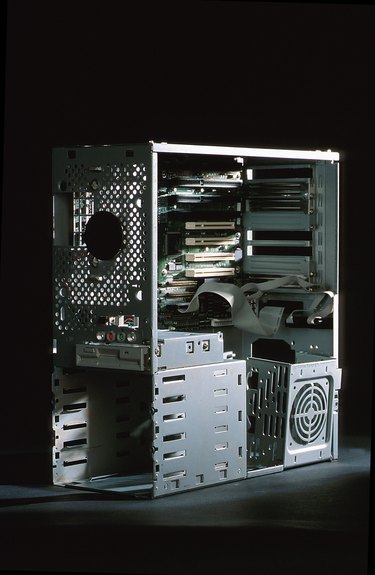
Computers large and small must have some type of start-up process, which is typically called the "boot" process. During this set of steps the computer checks itself to be sure all is well, loads some minimal operational software and loads the operating system. The term "boot" is a shortened version of the word "bootstrap," which was used in the early days of computing to describe the process whereby the computer pulled itself up by its "bootstraps."
Power Up
Video of the Day
The first step of any boot process is applying power to the machine. When the user turns a computer on, a series of events begins that ends when the operating system gets control from the boot process and the user is free to work. When the computer is turned on, the central processor executes some startup code in ROM that is located on the motherboard.
Video of the Day
Power-On Self Test
The next step in the boot process is called the POST, or power on self test. This test checks all connected hardware, including RAM and secondary storage devices to be sure it is all functioning properly. After POST has completed its job, the boot process searches the boot device list for a device with a BIOS on it.
Find a Boot Device
The I/O system is essential to the operation of the computer because it defines the rules for communications between the CPU and the other devices attached to the computer via the motherboard. The I/O system, sometimes found in the "io.sys" file on the boot device, provides extensions to the BIOS located in ROM on the motherboard.
Load the Operating System
Once the hardware functionality is confirmed and the input/output system is loaded, the boot process begins loading the operating system from the boot device. The OS is loaded into RAM, and any instructions specific to the particular operating system are executed. The actual operating system is somewhat irrelevant, as the computer will follow the same boot pattern in any case.
Transfer Control
Once the previous steps are complete and the operating system is safely loaded into RAM, the boot process relinquishes control to the OS. The OS then proceeds to execute any pre-configured startup routines to define user configuration or application execution. At the end of the handoff, the computer is ready for use.